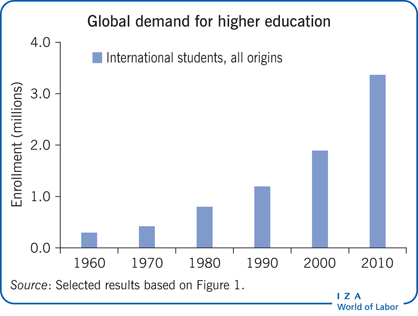Elevator pitch
To expand the skilled workforce, countries need to attract skilled migrants. One way of doing this is by attracting and retaining international students. Empirical evidence suggests that concerns about brain drain—that is, the emigration of highly qualified workers—are overblown and that student migration can positively affect economic growth in both sending and receiving countries. However, migrants themselves reap most of the gains, through higher earnings. So that in the end, international student mobility can be beneficial for all participants: migrating students and those who remain at home, as well as home and host societies.

Key findings
Pros
International student migration can foster economic growth in both home and host countries.
International student migration results in higher wages for the migrants.
Eliminating visa restriction increases both the number and the quality of incoming international students.
Cons
Some sending countries are at risk of brain drain, and their economic growth can falter as a result of student migration.
Sending countries incur fiscal costs because of the (temporary) absence of a skilled workforce.
Host countries face some fiscal costs by subsidizing international students, especially in countries where education is paid out of general taxation.